On November 8, 1737, a land deed recorded in Amelia County, Virginia contains a report of Saponi Indian cabins. This historical record is quite significant because it documents a very specific date and location of Saponi people. Throughout the 1700s, documented sightings of Saponi people continued to diminish, so any and every reference to the Saponi is important in tracking their location. In a previous blog post, I discussed the multiple reports of Saponi Indians in Granville County living next to Indian trader Col. William Eaton in the 1750s/1760s and I proposed that this was the foundation of the Native American community in Granville. (If you have not already read that blog post, I strongly suggest you do to make better sense of the content here). In this blog entry, I will look to see if any of Granville’s Native American families and nearby tribal communities can be tied to this record of Saponi Indian cabins in Amelia County.
Fort Christanna (1714-1718), the Saponi reservation:
Before discussing the Saponi living in Amelia County in 1737, some background information on where they were located before is needed. In 1714, Virginia Lt. Governor Alexander Spotswood (1676-1740) created Fort Christanna on the outskirts of what was then the Virginia Colony, to create a “buffer zone” between the English colonists and tribes they deemed as “hostile”. The fort was located is what is now Brunswick County, Virginia. The Saponi along with other related Eastern Siouan speaking tribes were invited to live on a reservation next to the fort. After gathering at Ft. Christanna, the various tribes were all referred to collectively as “Saponi”. I will do a future blog post specifically on Fort Christanna so I will not delve into all the details about the fort here. However what is important to know is that in 1718, the fort closed due to financial pressure from Great Britain and from competing Indian traders.
After the fort closure in 1718, it is evident the Saponi fractured into smaller family groups. Some Saponi (Tutelo) allied with the Haudenesaunee and relocated to upstate NY and were adopted into the confederacy. We also have multiple reports of Saponi in the 1730s moving to and from the Catawba reservation. So it is important for researchers to understand that after 1718, one report of the Saponi living in a specific area does not mean the entire Saponi Nation was located there. So the 1737 land deed which recorded the Saponi Indian cabins, does not mean that every Saponi Indian was living in Amelia County. Instead it means that a group of Saponi people were living there. Okay, let’s proceed…
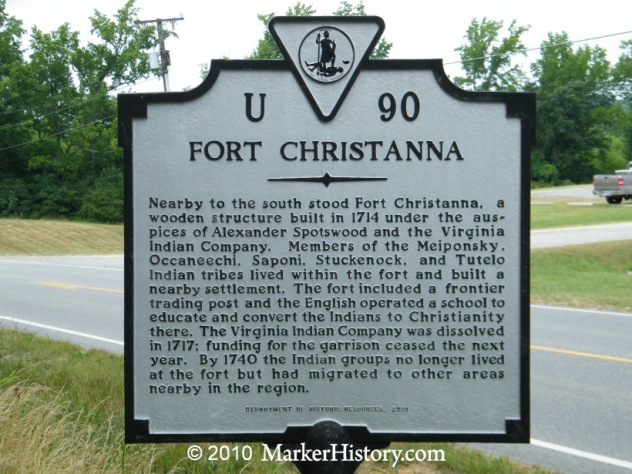
1737 Land Deed in Amelia County and Saponi Indian Cabins:
On November 8, 1737 (19 years after Ft. Christanna closed) in Amelia County, a land transaction took place between seller John Taylor of Surry Co, Va and buyer Alexander Bruce of Amelia Co, VA. The exact language of the deed reads as follows:
Beginning at a white oak above the Sappone Indians Cabbins, thence south 10 degrees, east 302 poles to a corner hicory near a branch of Winnigham Creek, thence east 10 degrees north 164 ples to a corner shrub white oak, thence noth 10 degrees west 218 poles to two corner Spanish oaks a the fork of a small spring branch thence down the said branch as it meanders to the said creek, thence up the creek as it meanders to the first station.
Source: http://nativeheritageproject.com/2012/12/04/sappone-indians-cabbins/
Previous research published by archaeologist C.G. Holland in 1982, identifies the precise location of the Saponi Cabins – on the south side of Winningham Creek and just west of State Route 617 also called “Winningham Road”. The closest municipality to this location is the town of Crewe which is located a few miles to the West. The approximate GPS coordinates of this site: 37°10’32.1″N 78°04’38.7″W
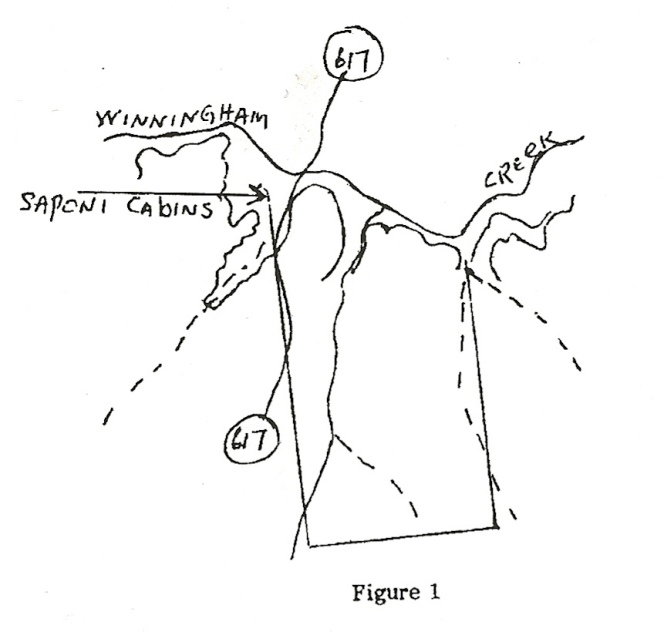
Source: http://nativeheritageproject.com/2012/12/04/sappone-indians-cabbins/
This area now falls within the borders of Nottoway County which was formed from the southern portion of Amelia County, VA called Nottoway Parish in 1789. It is also important to remember that the area where the Saponi cabins were located in 1737, is the section of Amelia Co that was formerly Prince George Co just 2 years prior in 1735. Therefore to find potential additional records related to the Saponi Indians residing off of Winningham Creek in 1737, we need to look at Prince George Co, Amelia Co, and Nottoway Co records. The land deed does not indicate how long previous to or how long after 1737, the Saponi resided off of Winningham Creek. It’s within reason to deduce that the Saponi had lived there at least several years before and after 1737, as cabins are permanent structures and the land deed would likely not rely upon a temporary point of reference.
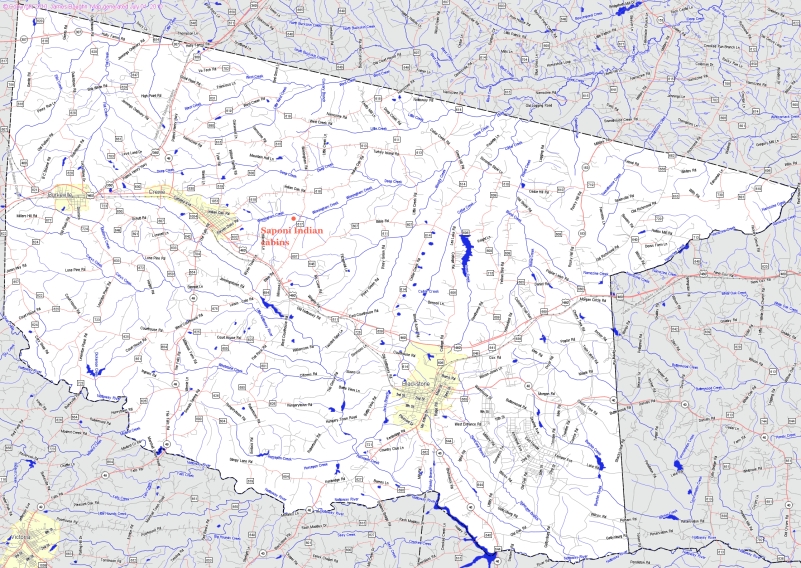
Source: http://bridgehunter.com/va/nottoway/big-map/
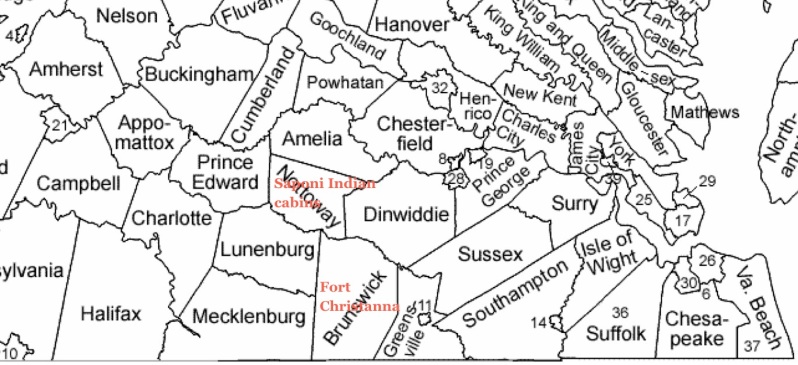
A Cluster of Indian Traders and the Saponi Indians:
A closer look at the Anglo residents who resided in Amelia Co/Prince George Co in the years leading up to 1737, reveals a lot about why some Saponi lived in the area. In the 1720s and 1730s, Prince George Co was served by Bristol Parish. Fortunately the Bristol Parish vestry book has survived to the present. A number of noted Indian traders and other Anglo colonists who had frequent dealings with local Indians resided in Prince George Co and served as the churchwardens and vestrymen of Bristol Parish. Many of these Indian trading families were related to one another. Here follows a summary of these men:
Col. William Eaton (1690-1759) was born in York Co, VA, and resided in Prince George Co, VA for most of his life. He is recorded many times throughout the Bristol Parish records. Eaton was an Indian trader who traded with Saponi and Catawba Indians. By 1746, Eaton relocated to Granville Co, NC and in a previous blog post, I discussed the numerous reports of Saponi Indians living next to his land and enlisting in his regiment. One of these Saponi men was William Chavis (1709-1778), who owned a substantial amount of land that formed the land base for the Native American community in Granville. Clearly, Col. William Eaton had a close relationship with the Saponi when he lived in Prince George Co, VA which continued when he moved to Granville Co, NC.
Other churchwardens of Bristol Parish included Colonel Robert Bowling Jr (1682-1749), Major Robert Mumford (1674-1735), Major Peter Jones III (1691-1753), Captain Buller Herbert (1680-1730), Major William Kennon (1685-1735), William Poythress (1694-1763), and Captain Henry Randolph (1689-1726).
Colonel Robert Bolling Jr. (also spelled “Bowling”) was an Indian trader and son of Robert Bolling Sr. (1646-1709) and his second wife Anne Stith. Robert Bolling Sr.’s first wife was Jane Wolfe – granddaughter of Powhatan Indian “Pocahontas” and Englishman John Rolfe. Jane Wolfe died shortly after giving birth to their son John Fairfax Bolling. Robert Bolling Sr. remarried Anne Stith (a white woman) and he had several more children with her including Robert Bolling Jr of Bristol Parish. Robert Bolling Jr. was married to Anne Cocke.
Major Robert Mumford was an Indian trader who along with William Byrd II, John Bowling, Robert Bowling, John Evans, Peter Jones, Thomas Jones and Richard Jones traded with Indians along the Great Indian Trading Path (aka the Occaneechi Path) in North Carolina. Robert Mumford’s son James Mumford (1705-1754) was married to Elizabeth Bolling (1709-1755), daughter of the above mentioned Robert Bolling Jr. and Anne Cocke.
Major Peter Jones III was a vestryman for both Bristol Parish and Raleigh Parish (Raleigh Parish served Amelia Co after it split from Prince George Co in 1735). Peter Jones was an Indian trader and accompanied William Byrd II on at least two expeditions on the Virginia-North Carolina border line. He was also the namesake for the city of Petersburg. Major Peter Jones’ father Captain Peter Jones II (1661-1727) was also a vestryman for Bristol Parish. Peter Jones III’s paternal grandmother Margaret (maiden name not known) was second married to Thomas Cocke after Peter Jones I died. Thomas Cocke was the uncle of the previously mentioned Anne Cocke, the wife of Robert Bolling Jr.
Captain Buller Herbert was captain of the Prince George Co militia and vestryman for Bristol Parish. William Byrd II writes about visiting Buller Herbert’s home which was a short distance from Major Robert Mumford’s. Buller Herbert was married to Mary Stith, daughter of Col. Drury Stith. Drury Stith was the brother of previously mentioned Anne Stith, wife of Robert Bolling Sr.
Major William Kennon was an Indian trader whose sister Mary, was the wife of Indian trader John Fairfax Bowling, son of the previously mentioned Robert Bowling Sr. and his first wife Jane Rolfe. William Kennon was married to Anne Eppes, daughter of Col. Francis Eppes.
William Poythress was an Indian trader and came from a large family of Indian traders. His wife was Sarah Eppes, sister of the previously mentioned Anne Eppes who was the wife of Major William Kennon.
Captain Henry Randolph was a vestryman for Bristol Parish and married to Elizabeth Eppes, sister of the previously mentioned Anne Eppes and Sarah Eppes.
Lastly there is Robert Hicks (1658-1759) who was an Indian trader and resided in Prince George Co before moving to Emporia, VA. His surname is spelled both “Hicks” and “Hix” in colonial records. In 1708 Robert Hicks purchased land in Prince George Co from the previously mentioned Peter Jones and made another land transaction in Prince George Co in the same year with Joshua Irby (1664-1746). In 1709, Robert Hicks purchased a land tract along the northside of the Meherrin River that has been previously surveyed by Arthur Kavanaugh. Kavanaugh was under investigation for misleading agreements between the Saponi Indians and the English.
Also noteworthy is that at the conclusion of the Tuscarora War in 1713, Robert Hicks lead an expedition that included 50 “tributary Indians” (meaning Indians who had been made treaties to not take up arms against the British such as the Pamunkey, Chickahominy, Nansemond, Meherrin, Nottoway, Saponi, Tutelo, and Occanecchi) to locate Tuscarora Indians who were hiding out from the war. Hicks successfully brought the Tuscarora Indians into Williamsburg with a delegation that included leaders from the Tutelo, Nottoway, and Saponi. When Fort Christanna opened in 1714, Robert Hicks was named captain of the fort and he relocated his family to the area. His homestead “Hick’s Ford” is close to the modern city of Emporia in Greensville Co, VA. Robert Hicks was married to Winnifred Evans, daughter of the previously mentioned Indian trader John Evans. Hicks also accompanied William Byrd in the 1722 expedition of the Virginia/North Carolina border. Included in this expedition was Saponi guide Ned Bearskin.
Clearly Prince George Co was home to a number of wealthy and influential Indian traders who had dealings with Saponi and other regional tribes. Close proximity to the Great Trading Path is also what brought all of these Indian traders into the Prince George Co area. Additionally, there was strong incentive for the Saponi to settle close to these Indian traders and the Great Trading Path in order to sustain a trade and “tributary” relationship with the Virginia colony. With all of this in mind, I think we have thoroughly explored and contextualized why a group of Saponi Indians were residing in cabins in Amelia Co in 1737.
Identifying the Saponi Indians in Amelia County:
With the identification of the Saponi Indian cabins in 1737 and the discussion of the numerous local Indian traders, we may be able to identify who some of these Saponi families were. The land deed did not provide any names of the Saponi Indians living in Amelia County in 1737, so we may never be able to fully verify their identities. However I was able to identify several Native American families, many who have descendants in Granville County and neighboring Native communities, that could very well be part of the Saponi Indian living in Amelia Co. And to no surprise, most of these families have intermarried with one another over many generations.
CHAVIS
Rebecca Chavis (1721-1768) first appears in the Bristol Parish records on Nov 11, 1734 when she was bound out to John West (1673-1743). On that exact same day a Sarah Chavis is bound out to William Macewen, so there is a strong probability that Rebecca and Sarah were sisters or some other close family relation. I don’t have any solid leads on who the parents of Rebecca and Sarah Chavis were. It is likely that their mother was an indentured servant and became pregnant during her servitude which is why her children were bound out by law. We know that both John West and William Macewen lived in the section of Prince George Co that became Amelia County the following year in 1735, because they are next found in the Amelia Co records. (A published copy of Amelia Co road orders found here, is what I frequently used to help locate where individuals lived). John West’ wife Mary asked the previously mentioned Indian trader Robert Mumford to represent her interests in a land deed. Furthermore, John West and William Macewen are on a list of tithables located below Deep Creek. Winningham Creek, the site of the Saponi cabins, runs northeast into Deep Creek. In 1740, the churchwardens of Raleigh Parish in Amelia County, bound out Rebecca Chavis’ son Adam Chavis. And in 1756, 1760, 1763, 1764, and 1768, the churchwardens of Nottoway Parish in Amelia Co, bound out more of Rebecca’s children. Rebecca Chavis is also mentioned in Dec 1760 in neighboring Lunenburg County, when the churchwardens of Cumberland Parish bound out her son Ned. So Rebecca Chavis lived in the immediate area of the Saponi cabins before, during, and after their documented reference in 1737.
All of Rebecca Chavis’ children were bound out repeatedly and it appears her Chavis family moved slightly southwest into Mecklenburg, Lunenburg and Charlotte Counties as they start to appear in those county records in 1768. At least two of Rebecca’ Chavis’ children – James Chavis (1749-1824) and Elizabeth Chavis b. 1751 had children who were well documented, so we are able to trace Rebecca’s line forward. James Chavis moved to Mecklenburg Co as early as 1782, when he first appears as a tithable and continued to be listed as a “mulatto” tithable through 1820. James Chavis’ and his wife Fanny were named in a May 14, 1800 order from the Mecklenburg County court, to have Frederick Gowen/Goins pay them $1.06 for being witnesses in a suit. James Chavis appears in the 1820 Census as a head of household of 10 “other free” in Mecklenburg Co. He died before 1824, when his estate was settled. James Chavis’ children – James, Lydia, Jincy, William, Thomas, Ann, Pleasant, Henry, Ellison, and Elizabeth were named in a 1832 chancery suit.
All of James Chavis’ children intermarried with other local Native American families and appear to have remained in Mecklenburg Co. Some of these Chavises are the ancestors of the contemporary Occoneechee-Saponi community located in Mecklenburg/Brunswick Co, VA. One of James Chavis’ children – Lydia Chavis (1779-1865) married Jeremiah Harris (1775-1855) and moved to Jackson County, Ohio by 1830. Their Harris family is a core family of the modern Midwest Saponi Nation, Saponi Nation of Ohio, and Catawba of Carr’s Run tribes all located in Ohio. The Catawba are a closely related tribe to the Saponi and a number of Saponi allied with the Catawba after the closure of Fort Christanna.
Going back to Rebecca Chavis, she also had a daughter named Elizabeth Chavis b. 1751 who was bound out by the churchwardens of Raleigh Parish in Amelia County on Aug 26, 1756. By 1760, Elizabeth Chavis was in Lunenburg Co, and by 1782, she was living in Halifax Co, VA. Elizabeth had two children born out of wedlock, Jesse Chavis (1766-1840) and Bartlett Chavis (born 1776). Elizabeth Chavis’ son Bartlett Chavis (born 1776) continued living in Halifax Co, VA as well as neighboring Pittsylvania Co, VA and married Elizabeth Matthews on Feb 10, 1803 in Halifax Co, VA. Elizabeth Matthews is of the Native American Matthews family that I discuss below. Bartlett’s probable children – Cole Chavis and Benjamin Chavis, were listed as tithables in the same household that Bartlett was a tithable in.
I should also include that since I don’t know who Rebecca Chavis’ (1721-1768) parents are, I don’t know if and how she is related to Granville community “founder” William Chavis (1706-1778). But certainly if the two are related, it lends additional credence that Rebecca Chavis was related to the Saponi Indian cabins. And it would explain why some of Rebecca’s descendants later moved to the Granville location of her relative William Chavis where the Saponi were also reported.
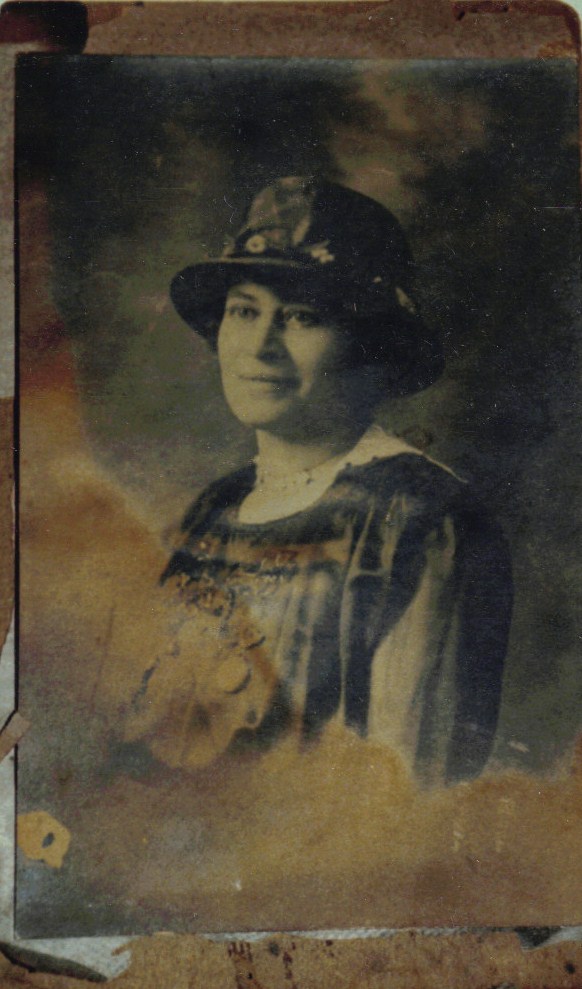
Source: Ancestry, Username: Eunicecarr61
MATTHEWS
On Oct 30, 1732, Ruth Matthews was bound to Robert Downing in Bristol Parish, Prince George Co. She next appears in the records as a “free mulatto”on Mar 7, 1756 when her daughter Elizabeth was baptized at St. James Northam Parish in Goochland County, VA. Ruth Matthews was then called an “Indian” on Sep 26, 1737 when her children Betty, Jemmy, Bristol, and Judith were bound to William Flemming of St. James Northam Parish in Cumberland Co VA (formerly a section of Goochland Co, VA).
I have not been able to identify who “Robert Downing” was and cannot locate him in any other historical records of Virginia from that time period. I also cannot locate any other Downings in the Brisol Parish records. I think it’s probable that his name has been mis-transcribed and the entry in the original vestry book should be reviewed for accuracy. Maybe the name should have been transcribed as “Robert Bowling” – as in Col. Robert Bolling Jr (1682-1749) – the Indian trader who we already know was a churchwarden of Bristol Parish. Without knowing exactly who “Robert Downing” was, it’s hard to identify exactly where in Prince George Co Ruth Matthews resided. But if it turns out to be Robert Bolling Jr, then that situates Ruth Matthews in close proximity to the Saponi Indian cabins and living with a known Indian trader.
Ruth Matthews’ son James (called “Jemmy” when he was bound out) Matthews was born around 1750 and moved to Halifax Co, VA by 1787. On Jul, 20 1790, he married Molly Cumbo with David Gowen/Goins providing the surety. James Matthews last appears as a tithable in 1813 in Halifax Co, VA and likely died shortly after that. I have not located any records of descendants.
Bristol Matthews, another son of Ruth’s was born around 1752 and remained in Goochland Co, VA when he married Ann “Nanny” Lynch on Sep, 25 1775. Bristol Matthews likely fathered Ann Lynch’s children who were born before their marriage and when she was still bound to George Payne. The reason being that while she was still an indentured servant, she could not marry. However when her service was complete, she immediately married Bristol Matthews. One child was Thomas Lynch b. 1772 who married Sally Banks on July 29, 1801. Another possible child of Bristol Matthews and Ann Lynch’s was Patsy “Martha” Lynch b. 1774. Patsy Lynch is the progenitor of the core Lynch family of the Haliwa-Saponi tribe. Patsy first appears in the Halifax Co, NC minutes in 1798 and I have not located her in the Virginia records so I don’t have any further verification that she was the daughter of Ann Lynch and Bristol Matthews.
Returning to Ruth Matthews – her father was most likely William Matthews who is mentioned a few times in the Bristol Parish records. On Nov 17, 1722, William Matthews’ stepson William Snelgrove was bound out to Robert Lyon. In that record William Matthews was identified as an “Indian”.

Source: The Vestry Book and Register of Bristol Parish, Virginia, 1720-1789
And on July, 24 1727, the churchwardens of Bristol Parish, including all of those Indian traders that I discussed earlier, bound Mary Bibby to William Matthews. The dates of both of these records would make William Matthews an appropriate adult age to be Ruth Matthew’s father, given her approximate birth year was 1728.

Source: The Vestry Book and Register of Bristol Parish, Virginia, 1720-1789
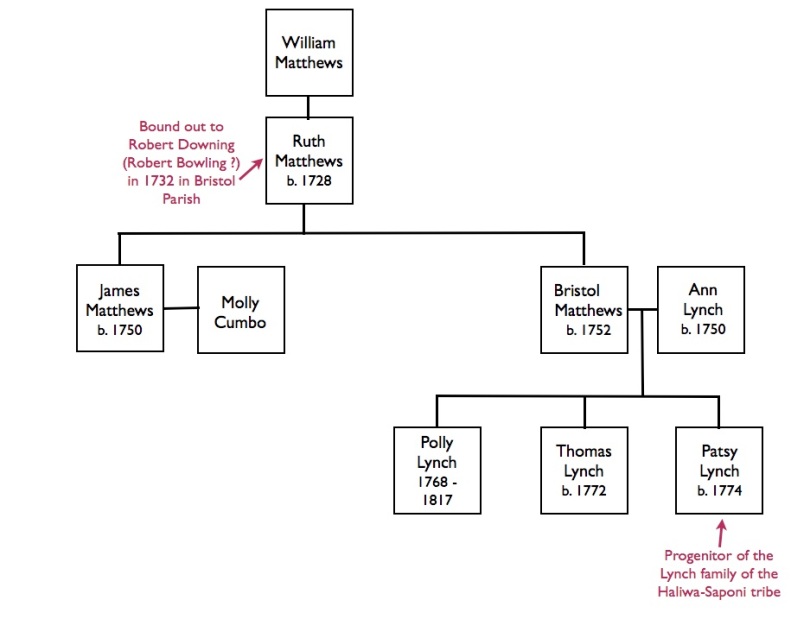
© Kianga Lucas
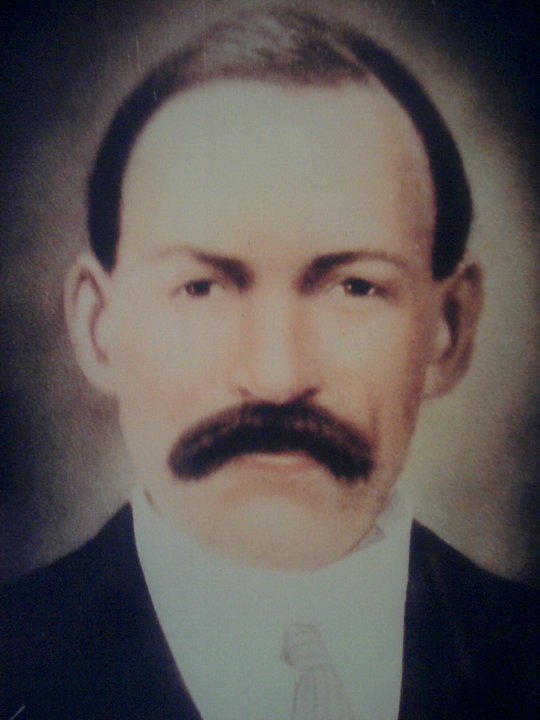
Source: Kimberly Jackson
BIBBY
The Native American Bibby family in Granville/Franklin Cos, NC descend from Mary Bibby who as previously mentioned in the Matthews section above, on July 24, 1727 was bound by the churchwardens of Bristol Parish to William Matthews.

Source: The Vestry Book and Register of Bristol Parish, Virginia, 1720-1789
Mary Bibby’s parents are unknown, but it is likely her Bibby surname is connected to the Bibby family descending from William Bibby, an Englishman who arrived in Accomack Co, VA in the 1620s. I think it is also possible that William Matthews was Mary Bibby’s father since she was bound out to him. We know from other Bristol Parish and Goochland Co records that William Matthews and his Matthews family were documented as “Indian” and it seems highly unlikely the colony would bound out a child to an “Indian” that was of no relation to the child.
It is not known how long Mary Bibby stayed in Prince George Co but by 1759 she was living in Granville Co, NC. In 1762 she wa a tithable in Joshua Ingram’s household and had married his “negro slave” Charles. The part of Granville Co that she lived in became Franklin Co in 1779. Mary Bibby had several documented children: Edmund Bibby b. 1758, Fanny Bibby b. 1759, Solomon Bibby (1764-1846), Absalom Bibby b. 1764, and William Bibby b. 1766 who all continued to live in Franklin Co. Solomon Bibby (1764-1846) married Charity Young b. 1768 on Dec 25, 1789 in Franklin Co. Charity was from Bertie Co, NC and from the Young and Demery families that have connections with Nottoway and Tuscarora people (and the modern Lumbee community). Solomon Bibby was a pensioned Revolutionary War veteran, along with his brothers Absalom and Edmund.
Local Granville Co historian Oscar W. Blacknall (aka David Dodge) wrote about the Indian identity of the “free negroes” of the area which I blogged about previously here and the Bibby family was included in his writing. In Blacknall’s October 12, 1895 letter to the editor of the News and Observer, he talks about a “free negro” Revolutionary War soldier named “Dibby” and his son who strongly protested the 1835 state constitution which disenfranchised all “free people of color”. There are no Dibbys in the area and given that Blacknall misspelled other names in this same letter, I’m certain he meant to say “Bibby”. And I’m confident Blacknall is referring to Solomon Bibby (1764-1846) because he is the most well known of the Bibby siblings and neither Edmund or Absalom Bibby had any documented sons. The descendants of Solomon Bibby continued to intermarry with Granville’s Native American community.

Source: News and Observer, 12 Oct 1895, Sat, Page 2
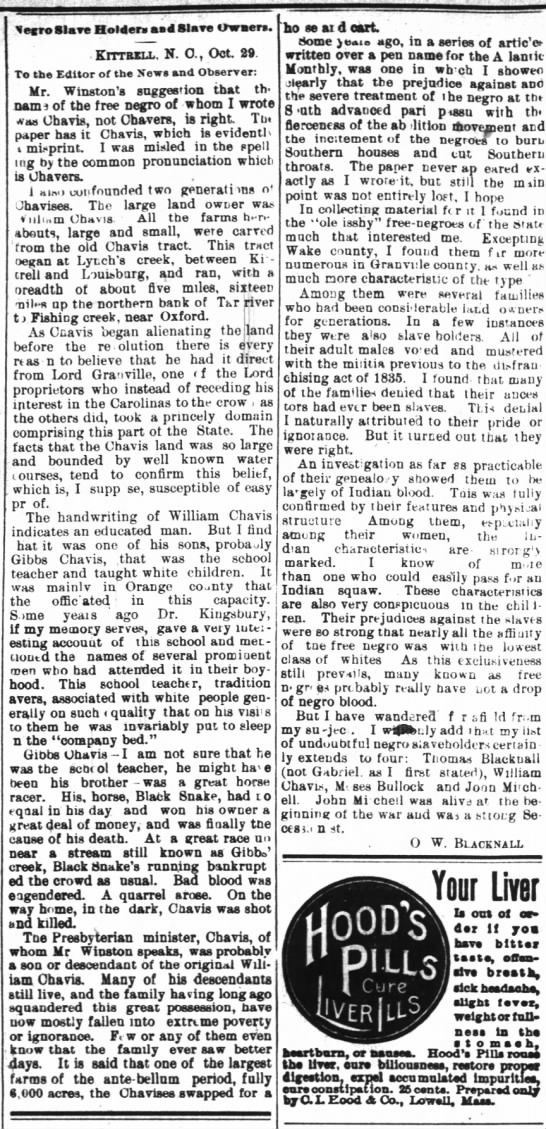
Source: News and Observer, 31 Oct 1895, Thu, Page 2
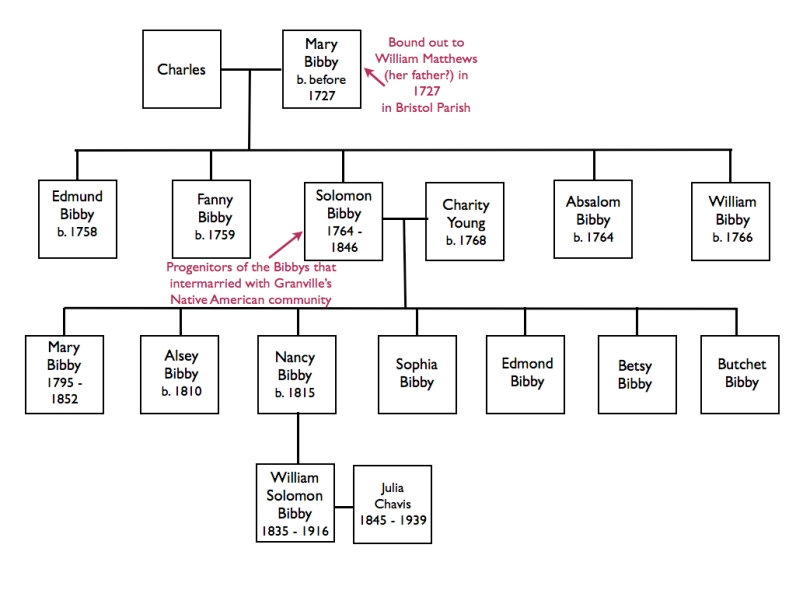
© Kianga Lucas
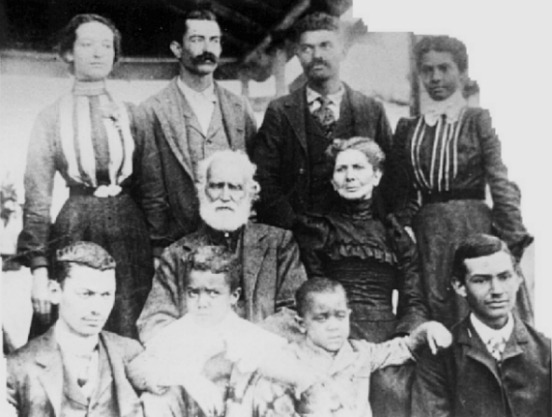
BRANDON/BRANHAM
The Brandon family (also spelled Branham, Brandum, Brandom) descends from several Brandons living in Bristol Parish, Prince George Co, as well as surrounding areas of Brunswick Co. and Henrico Co. who first appear in the records in the 1720s, 1730s, and 1740s. It is not known exactly how all these Brandons relate to each other but a few Brandons who were born in the household of Godfrey and Elizabeth Ragsdale in Bristol Parish were most likely siblings and could be connected to the Saponi Indian cabins. Edward Brandon was bound to Godfrey Ragsdale on July 9, 1730 and in 1751, Edward Brandon was a tithable between the Flatt and Deep Creek districts of Amelia Co. As you will recall, Winningham Creek the site of the Saponi cabins runs off of Deep Creek in Amelia County. Margaret Brandon was born on Nov 7, 1720 and was bound to Godfrey Ragsdale on Oct 10, 1722. Doll “Dorothy” Brandon was bound to Godfrey Ragsdale on Jul 24, 1727.
Contemporaries to siblings Edward, Margaret and Doll Brandon, who are probably of some family relation to them include: Benjamin Branham b. 1721 who lived in Louisa Co, and Eleanor Branham/Brandon b. 1728 and who lived in Brunswick and Lunenburg Cos. There was an Edward Branham b. 1760 who was likely related to Benjamin Branham and Eleanor Branham/Brandon. Edward Branham first appears as a tithable in Amherst Co, VA in 1783 and he is the progenitor of the core Branham family of the state recognized Monacan Tribe in Amherst Co. The Monacan are another Eastern Siouan tribe that are very closely related to and allied with the Saponi at Fort Christanna.
Eleanor Brandon/Branham is the common ancestor of the Brandon family of Granville County. She also has descendants who remained in Mecklenburg Co and who removed to Ohio and are part of the Midwest Saponi Nation and Saponi Nation of Ohio. Eleanor’s surname is spelled both “Branham” and “Brandon” in the records, but her children more often used the “Brandon” spelling. The Brandons in Granville County intermarried with the Native community and became a core family.
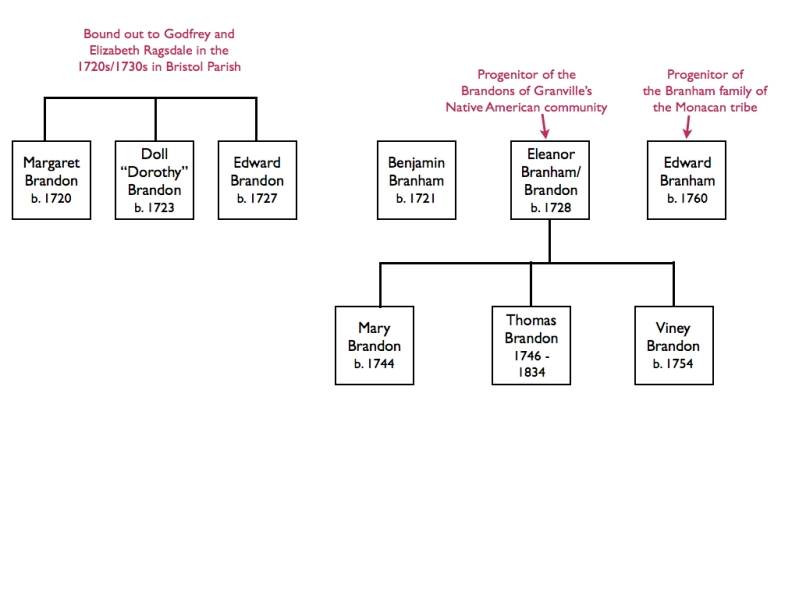
© Kianga Lucas
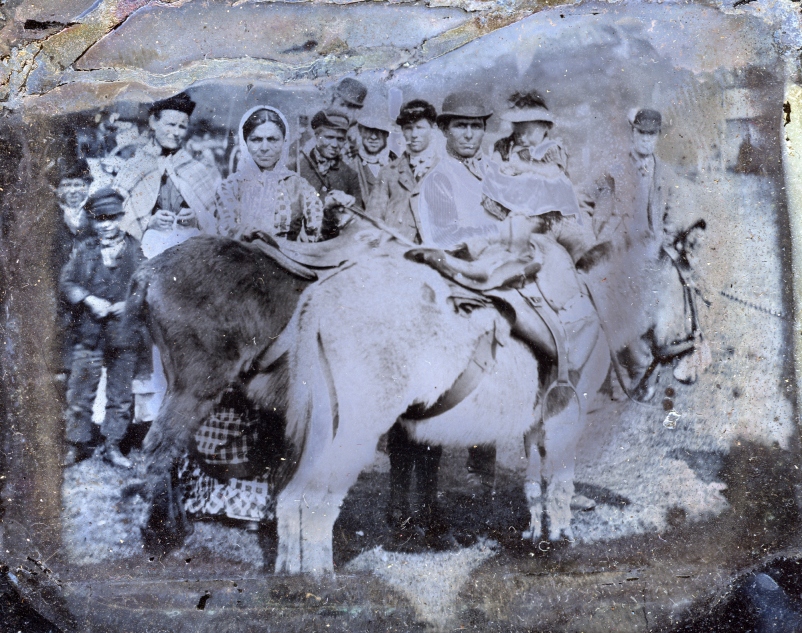
Source: Jerry Dagenhart
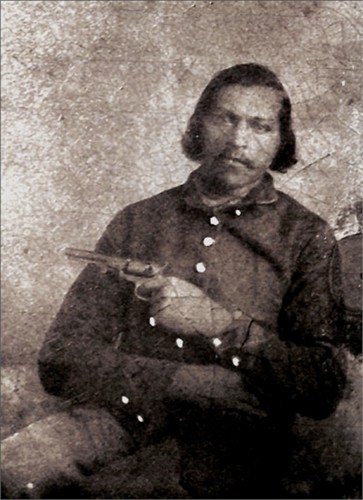
Source: Jerry Dagenhart
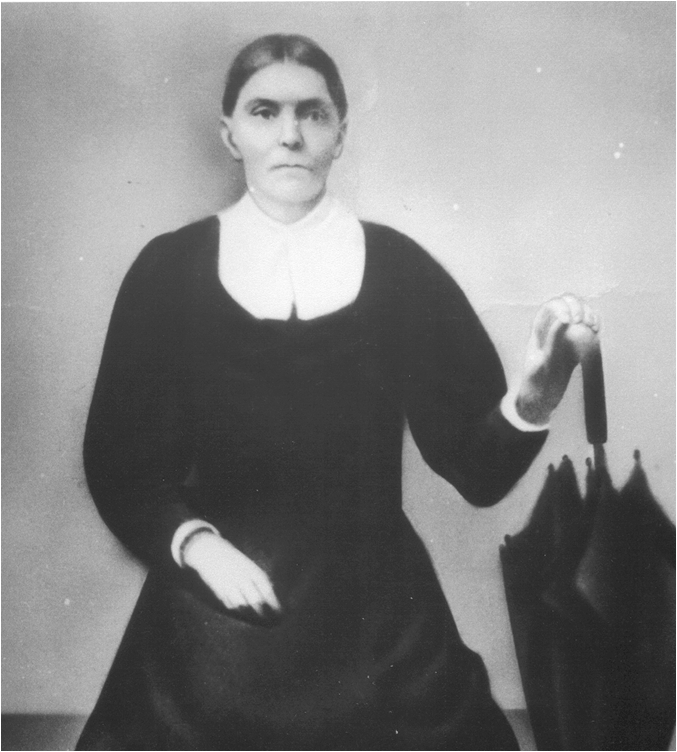
Source: Ancestry, Username: rthomas1973
STEWART/STUART
Elizabeth Stewart b. 1695 had several children whose birth, baptisms, and indentures were recorded in Bristol Parish from 1721-1741 – Edward b. Aug 19, 1721, William b. 1723, Matthew b. Sep, 19 1726, Mary b. Sep, 19 1732, Martha b. Oct 3, 1741. Her son Edward Stewart b. 1721, was bound to the previously mentioned Indian trader Buller Herbert in Bristol Parish, Price George Co. By 1747, Edward had moved to Chesterfield Co, VA. His son James Stewart b. 1760, was counted as an “Indian” on the 1795 Goochland Co, VA tax list. A possible son of Edward Stewart’s named John Stewart (1758-1812), married Pamunkey Indian Frances Dungey. In fact John Stewart or a brother of his, may be responsible for the Stewart family currently found in Chickahominy and Pamunkey tribes. Many of John Stewart and Frances Dungey’s documente descendants relocated to Ohio and are found among the Midwest Saponi Nation and the Saponi Nation of Ohio.
Elizabeth Stewart’s son William Stewart b. 1723 who is the progenitor of most of the Stewarts found on Granville’s Native American community, was bound to Indian trader Col. William Eaton in 1739 by the churchwardens of Bristol Parish. Several years later Eaton moved to Granville Co living next to the Saponi so it makes sense that some of William Stewart’s descendants later ended up in Granville. By 1779, William Stewart was a resident of Mecklenburg Co when he purchased land in the county. His wife was Mary Harris was the aunt of the previously mentioned Jeremiah Harris who married Lydia Chavis. Another son of Elizabeth Stewart’s named Matthew Stewart b. 1726, had a son named Titus Stewart b. 1753 whose descendants are also found in Granville Co.
There is another Stewart lineage that descends from a John Stewart (17175-1765) and his wife Martha Patty Harris (b. 1730) who lived in neighboring Lunenburg and Mecklenburg Cos, VA. Their son Thomas Stewart (1742-1818) is the progenitor of the core Stewart family of the Sappony Tribe of Person County.
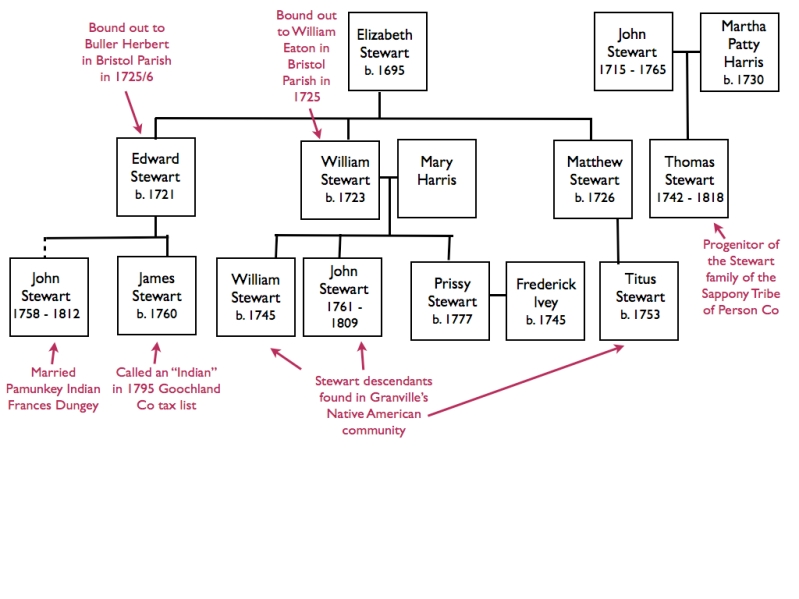
© Kianga Lucas
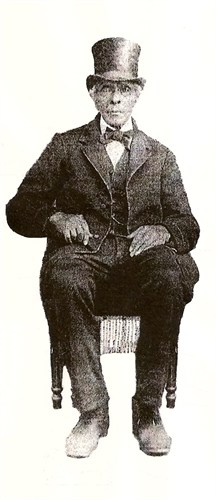
Source: Ancestry, Username: shaithcox
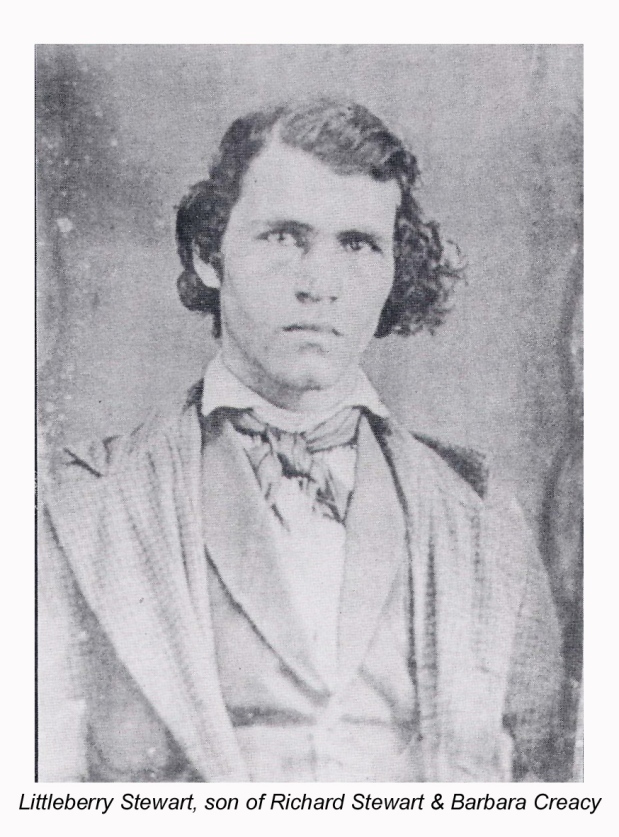
Source: Ancestry, Username: shaithcox
BIRD/BYRD
Elizabeth Bird b. 1720 was called a “mulatto woman” when her daughter Molly Bird b. 1738 was bound out by the churchwardens of Bristol Parish on Dec 9, 1740. The person who Molly Bird was bound out to was not named, so we don’t know the exact location of Elizabeth or Molly. Next on On Nov 24, 1757, she sued for her freedom from Alexander Bolling in Amelia Co. Alexander Bolling (1720-1767) was from the Indian-trading Bolling family and the grandson of the previously mentioned Col. Robert Bolling Sr. and his second wife Anne Stith.
Molly was also called Mary Bird and is next found in the Brunswick Co, VA records where her children were bound out by the churchwardens of Meherrin Parish on Feb 28, 1780. Her children all appear to have moved to Charlotte Co, VA: Joseph Bird b. 1765 married Nettie Jackson on Aug 20, 1790, Catherine Bird b. 1769 married Isaac Jackson on 22 Sep 1797 in Lunenburg and then moved to Charlotte Co, Peggy Bird b. 1770 did not marry and appears in the tax lists, and William Bird b. 1775 married Polly Carter Nov 19, 1796. Molly Bird’s descendants’ that remained in the Charlotte Co area can be found among contemporary Occoneechee-Saponi tribe in the area and some descendants moved to Ohio and are part of the Saponi Nation of Ohio and Midwest Saponi Nation.
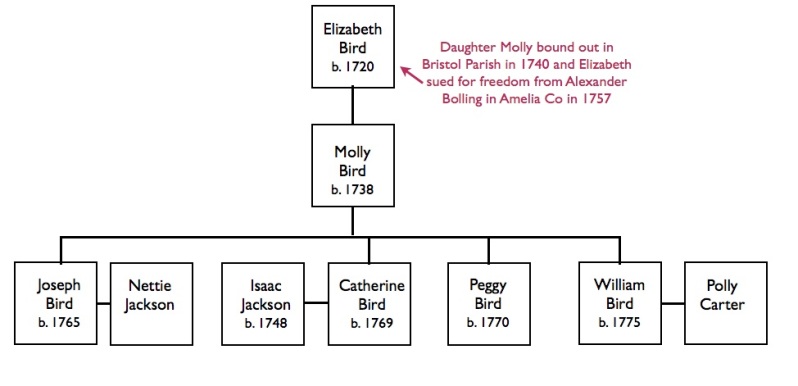
© Kianga Lucas
LAWRENCE
Three contemporary “Indian” Lawrences who lived in Amelia Co. and Brunswick Co. and were likely siblings: Martha Lawrence b. 1730, Drury Lawrence b. 1734, and Robin Lawrence b. 1735. Drury is the only one mentioned in Amelia Co when on Jun 26, 1755, he asked to be discharged from his indenture to Charles Irby (1695-1763). Charles Irby was a justice and prominent land owner in the area of Amelia Co where the Saponi cabins were reported. By 1772, Drury Lawrence was living in Lunenburg Co, VA when he taxed as an “Indian” in Cumberland Parish. Martha Lawrence’s son Richard Littlepage Lawrence b. 1747 was called an “Indian” when he was bound out to Drury Stith Jr. in 1751 in Brunswick Co, VA. Drury Stith Jr. was the son of the previously mentioned Col. Drury Stith and nephew of the previously mentioned Anne Stith who married Robert Bolling Sr. When Robin Lawrence’s son Wood Lawrence b. 1767, registered as a “free negro” in 1811 in Charlotte Co, VA, his father Robin was called an “Indian”. The Lawrences intermarried with other local Native American families including : Jumper, Flood, and Barber. Descendants are found among the Occoneechee-Saponi tribe in Mecklenburg/Brunswick Co, VA.
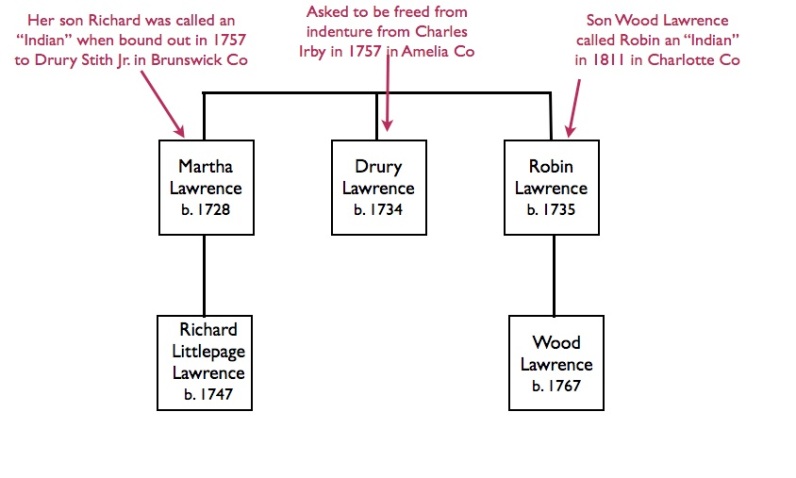
© Kianga Lucas
VALENTINE
There were quite a number of Valentines who first appear in the records in the early-mid 1700s in neighboring counties in southside Virginia that may be related. Only one was found in area of the Sapon cabins and that was John Valentine b. 1721. John Valentine first appears in the Amelia Co records in May 1743 when he accused Charles Irby of keeping him as a slave despite being a free person. This is the same Charles Irby who the previously mentioned Drury Lawrence asked the courts to relieve him of his servitude in 1755. There are no known records for John Valentine before 1743, but if he was an indentured servant to Charles Irby before 1743, then he also lived in the area of the Saponi Indian cabins in 1737. There are Valentine descendants in Granville’s Native American community who first appear in the Granville records in the first decades of the 1800s. Unfortunately because it is not known how all of these early Valentines are related to one another, I’m unsure where the Granville Valentines exactly fit into the larger Valentine family tree.
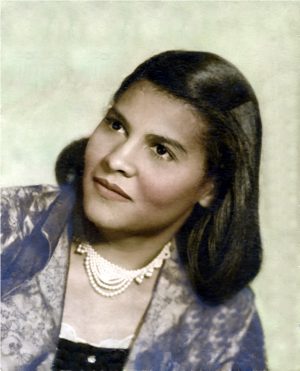
Source: Ancestry, Username: geelow2
HOWELL
Judith Howell’s 1725 birth was registered in St. Peter’s Parish in New Kent Co as a daughter of Dorothy Howell, a “mulatto” servant of Sherwood Lightfoot. Judith Howell does not appear in the records again until 1752, when she complained to the Amelia Co, VA courts that John Thomas was keeping and detaining her as a slave despite being a free woman. The following year in 1753 she was taxed in the Nottoway Parish, Amelia Co household of Abraham Cocke (1690-1760). Abraham Cocke was a relative of the previously mentioned Anne Cocke who was the wife of Indian trader Robert Bolling Jr. Both John Thomas and Abraham Cocke lived in the area of the Saponi Indian cabins and were neighbors with the previously mentioned Charles Irby. There is a thirty year gap between Judith’s birth and her complaint against John Thomas, so I’m not sure where she was living during those years. I do believe Judith Howell was of the Pamunkey tribe, because the Pamunkey reservation was situated directly across the river from where she was born in 1725 and historian Dr. Helen Rountree calls the Howell family “fringe Pamunkey”. However Judith Howell ended up living in Saponi territory with descendants who intermarried with Saponi families. It could be the Howells, were similar to the Stewarts and Dungeys who have early tribal roots with both the Pamunkey (or Chickahominy) and Saponi people.
In 1753, Judith’s son Matthew Howell (1752-1793) was bound out by the churchwardens of Nottoway Parish, Amelia Co. Matthew Howell moved to Charlotte Co, VA and his son Freeman Howell (1777-1870) is the progenitor of the Howell family in Granville’s Native American community. Other descendants of Matthew Howell remained in the Charlotte/Mecklenburg Co area and some moved out to Ohio to form core families of the Saponi Nation of Ohio and the Midwest Saponi Nation.
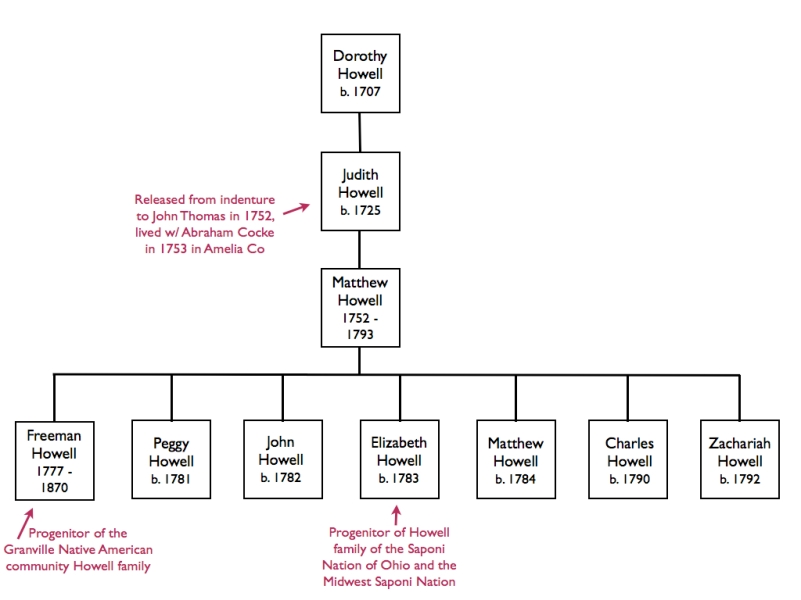
© Kianga Lucas

Source: Ancestry, Username: rthomas 1973
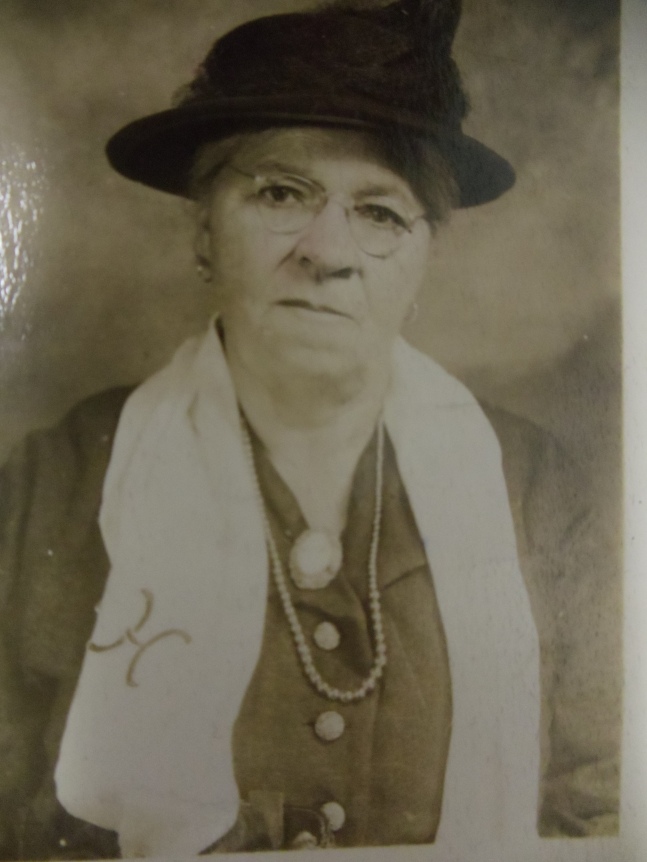
Source: Ancestry, Username: rthomas1973
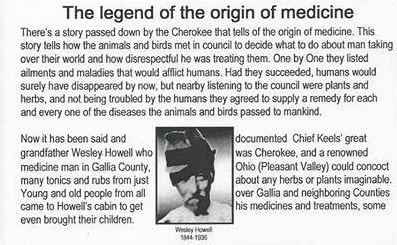
Source: Midwest Saponi Nation
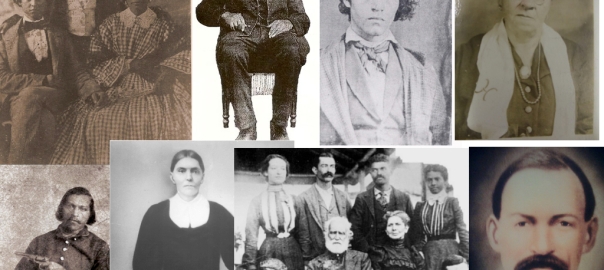
My name is Gary M. Harris. Can you help me find my people? My Grand Dad was Delbert Harris and my Grand Mom was May Scott. My Dad was Gary D. Harris. Thank you.
LikeLike
I find that a lot of your research are so similar to mine it is good to have some pictures to go along with the history My father ( Lynch and Evans) my Mother (Lynch and Richardson) road block trying to research Ann Lynch pass 1750 did not say she was Native American but I see you have info that it puts her as a indentured servant which is what most Native American were at that time and the fact that you are not sure that Patsy is Ann daughter this I find interesting why do you think she is not Ann daughter is there not a record since she was servant to Payne should there not be a record somewhere of the birth. My Fathers family is descendant from first Marriage of James Lynch son of Patsy Lynch and James Weaver before he married her. My mom is also a descendant of the second marriage of James Lynch my Mom Mother /her Father descendant of Sally Bass, Last record on my moms mother side Frances Price ends 1800 on census no records shown birth certificate or parents could have been change during Plecker time don’t know I am just trying to find out were we originated from after being relocated so many times.
LikeLiked by 1 person
Hi Regina,
Thanks for checking out the blog. I do believe that Patsy Lynch of Halifax Co, NC is a daughter of Ann Lynch of Goochland Co, VA. The challenge has been to find a record that firmly places Patsy Lynch in Virginia before she came to Halifax Co, NC. She also likely would not move by herself from VA to Halifax Co, NC. She would have come with family, so we also need to identify when and how she got here.
And it sounds like we are related. My 5th great-grandparents were Benjamin Richardson and Mary Bass of Halifax Co, NC.
LikeLike
Hi Kianga,
I have been so busy at work I was reading the response you gave me I did find some information that was documented in the courts I will go through my paperwork and get back with you. I would love to meet up with you and talk about this also want to know if you have any information on the clans.
LikeLike
Hi Regina we are related through the Lynch family James Weaver and Pasty Lynch. I am also related to the Bass family
LikeLike
Fascinating read! My Watkins family from Pittsylvania County, VA. can also trace back to the Occaneechi Saponi of the Mullato Belt. My ggggrandfather Isaac Watkins born 1790’s in Brunswick County, VA and was bound out to Bartholomew Dameron along with his two brothers and sister. The Dameron Family moved to Caswell County, NC in the late 1700’s with the Watkins children living as FPOC in their household. My Mother’s side, the Guy family traces back to the Occaneechi as well via Mecklenburg County, VA. and Isaac Jackson and Catherine Byrd are some of my Mothers maternal ancestors. Her gggrandfather was Samuel Jackson of Charlotte County, VA. a FPOC that married Rena Adams of Pittsylvania County, VA. in the early 1800’s. My parents were told by my Mothers relatives that they were distance cousins but they never knew how. My dad’s people were called Ishafree (Issue Free) Indians in Danville, VA. by the locals and they were mostly shop owners and teachers. My mothers people called themselves Cherokee because a lot of their people had moved to the NC western Counties and lived among them.
LikeLiked by 1 person
Patrick,
Thank you! I’m very familiar with your ancestors. My family descends from the Guys as well, William Guy who removed from Mecklenburg Co, VA to Granville Co, NC. My Howell and Brandon/Branham lineages were in Mecklenburg Co, Va and Charlotte Co, VA before removing to Granville Co, NC.
Did you read my article about local historian Oscar Blacknall? He discusses the term “old isshy” which is what we were called.
LikeLike
Kianga,
Just read your article and was amused by the use of Isshy. We always shook our heads at my mother when she used the term Ishafree/Isshue and we used to question her on what it meant. I also notice that a lot of the information on the Tyler, Taborn, Guy families etc.. is included on my tree. Francis Tyler and I put together the connection of our Guy relatives back to brothers Christopher and John Guy of Mecklenburg County, VA. thru his Miles Guy of Caswell County, NC. John Guy would be my mothers fourth grandfather and our Guys continue to live in and around Caswell County, NC. I’m also researching a connection to Cuffee Mayo b.1800 married to Alphia Goode on July 3, 1819 in Halifax County, VA.. He is my Dads mothers third grandfather on her fathers side. I have him living in Pittsylvania County, VA. in 1840 as a FPOC head of household and wonder if this may be same Cuffee Mayo that later lived in Granville County, NC. It makes since that these family continually intermarried with one another since it was illegal to marry someone White or marry someone enslaved. I have an extensive family tree on ancestry.com and can share it with you if you like. One big stumbling block I have is the maternal names of most of my female ancestors before 1870 so, there are probably a lot more connections to be made. Also do you know what was the significance of Hamilton County, OH was? Isaac Watkins moved there in the 1830’s with most of his household and my gggrandfather Pleasant Watkins stayed in Caswell County, NC.
Thanks,
Patrick Watkins
LikeLiked by 1 person
Patrick,
Okay great! William Guy was Christopher and John Guy’s brother. He was a Rev war veteran and filed a pension. I think I have seen your family tree on Ancestry but please do send a link to my email kiangalucas@gmail.com. The Cuffy Mayo that you’re researching is a different person from the Cuffy Mayo of Granville Co who first married Glathy Hawkins and second married Julia Pettiford. I can also explain the Ohio significance as well via email. So happy to connect with you!
LikeLike
I enjoyed reading your blog. I initially came here because of one of my DNA matches who is a member of the Ross family. Both my husband’s any my families have VA origins with some being FPOC. My husband has a connection to the Howell family to name 1 surname and I have several other surnames that connect to my Charity family from Surry and Charles City Counties. My maiden name is Stith.
LikeLike
I would like to see when the Richardson name appeared with the Saponi and how many tribes has the Richardson name is it just the Haliwa or others
LikeLike
I would like to see that as well. My mother was a Richardson (Lucille), grandfather is Rev. C. H. Richardson. I also just did my DNA with Ancestry.com. Very interesting and do many hits – 5 generations back, or more.
LikeLike
yes can some one link nat richardson to this family thank you for your help
LikeLike
Dear Kianga Lucas, I love your website. However, I am confused, or maybe just unclear. My daughter is related to Richard Stewart (the patriarch of the Stewart family that migrated to Cassopolis, Michigan in the 1840s). The large Stewart family married into multiple families from Southampton,Virginia and Northampton, North Carolina. How are the Stewarts Native American? I know Francis Dungey was John Stewart’s 2nd wife, are you aware if his first wife was also a Dungey? My daughter is related to Richard Stewart’s older brother Rev. William Stewart, who was married to Mary Dungey. Their son Rev .Richard W. Stewart was married to Nancy Dungey. Their son George W. Stewart married Eliza Pettiford ( the Pettifords of Amelia Co. Virginia and Granville Co. North Carolina. My daughter is also related to the Allens, Byrds, Ashes, Waldens, Ivens, Penns, Scotts, Wades, and Newsomes families. All of these families migrated from Virginia/North Carolina to Ohio/Indiana and finally settling in Michigan. Thank you for any enlightenment on this family.
LikeLike
Hi there,
Thank you for reading the blog.
Within the section on the Stewart family in this particular blog post is primary source information which directly or indirectly identifies the Stewart family as Native American.
Elizabeth Stewart’s grandson James Stewart was identified as “Indian” on a 1795 tax list.
Elizabeth Stewart’s son William Stewart was bound out to Indian trader Col William Eaton. Eaton had a particularly close relationship with the Saponi Indians and they are documented several times living on/adjacent to his land (see my blog posts on Col Eaton).
Stewart is 1 of 7 core families of the Sappony Tribe of Person Co who have been continuously recognized as a Native American tribe by the of North Carolina since 1911 and by Virginia since 1913 (their territory strecthes across Person Co, NC and Halifax Co, VA):
http://www.learnnc.org/lp/editions/nc-american-indians/7281
And more about your daughter’s Stewart/Dungey lineage: Rev William Stewart’s brother Rev John Stewart was a missionary to the Wyandot tribe. In the history about his relationship with the tribe, he is described as being mixed black, white, and Native:
http://www.wyandot.org/methodistmissions.htm
Here:
http://www.wyandot.org/stew1.htm
Another link about Rev John Stewart:
http://touringohio.com/profiles/john-stewart.html
Nearly all of the additional surnames you listed along with direct lineal descendants of the Stewart/Dungey family are found within enrolled members of the Midwest Saponi Nation.
I can put you in touch and they can provide with you a lot more detailed info. Feel free to email me kiangalucasATgmailDOTcom
LikeLike
Hello Kianga, my mom’s [Francine Dalton] gedmatch kit [#T556909] shows she is related to tribal members [Whitmore, Jeffries & probably more] of the Occaneechi-Saponi Nation in Alamance Co., NC. Do you have an account & kit at FTDNA & gedmatch? If so, what are your kit #s? My mom’s FTDNA kit # is 329383. Do you know where I can find a list of current & past members of the Occaneechi-Saponi Nation? I think my mom’s connection to the distant ancestry of the Occaneechi masy be through her great X 4 grandparents Lydia Parker & husband William Shelton. Do you know if Lydia Parker was Native American?
Thank you
Marshall Spencer
LikeLike
Oh and I just remembered that Nancy Dungey Pompey who was the daughter of Nancy Dungey and Uriah Rickman owned a pair of moccasins made by the Wyandot tribe. Probably from the family’s close relationship with the tribe. The moccasins are in a museum in Cass County and I have a picture of them if you’d like to see.
LikeLike
This is a great post. Thanks for putting all this together.
Kim Jones at SaponiTown.com posted a link that brought me here. My Jones-Smith ancestors are part of this group. Our Smith line changed their name when they came from VA to Indiana. The Jones were near the Staunton in the 1750s. Through DNA we’ve found several Richardson connections, and see Dungey, Chavis, and Boling in cousin’s trees. The haplogroups on these lines confirm the Native American-African-European mix. I’m still trying to work out all the primary sources in Virginia and our specific connection to Col Eaton.
My wife is a descendant of Annenontak Arendanki (Wendat Bear Clan) on her mother’s side. We were talking about what family trip we could take. I wanted to go down to Cass County MI for a Catawba-Saponi meeting. She wanted to go to the Wendake Pow Wow in June. They have good crafts there, growing up I had snowshoes from Wendake, and a ceinture fléchée. Think we will end up staying local for the Odawa Pow Wow this year and go to Roanoke Rapids for the Haliwa Saponi Pow Wow next year.
LikeLike
Thank you so much for putting together this great information!
I’m working on genealogy for a friend who is new to the field; she is a descendant of a Daniel “Chivis” (probably Chavis), listed as Mulatto on censuses, born about 1790 in Mecklenburg Co, VA who married a Nancy Jeffers/Jeffreys/Jeffries from Clarke County, KY. I’ve got a good handle on all their children and lines of descent (they were married in Union Township, OH in 1815 and ended up in Indiana and Michigan) but I’m completely stuck on their parentage.
I’ve read about the Chavis and Jeffreys families in VA and KY at that time including Paul Heinegg’s excellent book and it seems very likely that my friend’s ancestors are connected to these in some way. Some family trees list Daniel’s father as James but I see no proof of that; some confuse him with David Chevis of Caroline county (white Scottish immigrant and postmaster of Leedstown).
If any of these names ring a bell or if you have any other suggestions to further my research or would like to exchange information, I’d love to hear from you.
Brad
LikeLike
Hello, My name is Jeanne Domek Yellow Robe and I am trying to get more information on my Scott side of the family. It’s my dad’s maternal side. My great grandfather Daniel Scott was born in 1843, Staunton, Virginia. His father Daniel and mother Priscella Scott were first cousins and born in Newman, now Newmns Creek Warren County North Carolina. My 3 times great grandfather was Hager Scott. For the longest time I was trying to track these folks down. I finally found the right county. Would you happen to have any more information on these people? Thank you for anything you can spare.
LikeLike
Greetings!
My maternal 3rd great grandfather was Peter G. Morgan (1817-1890) (“mulatto”) from Nottoway CO, VA. Peter G. Morgan was one of the first blacks elected to the Virginia House of Delegates after the Civil War. Apparently he was known as “The Indian” in the Virgina House of Delegates, although I have not found evidence of his parents. His parents may have been John Morgan (1790-1820) and Margaret “Peggy” Vance (1790-1830). Peter’s daughter, Virginia Michigan Morgan (1858-1920) married Rev. James Solomon Russell that founded St. Paul’s College in Lawrenceville, VA. I am descended through his son, Albert Morgan Sr. (1843-1915).
Also, on my maternal line are the Maclins from Mecklenburg and Brunswick Counties, VA. The Maclins intermarried with the Valentines. I believe from my research and a recent AncestryDNA match of a distant cousin that my maternal 5th great grandparents are Anna Pinn/Penn (1751-) and Thomas Stanhope Evans (1751-1831). Their daughter, Delilah Evans (1776-1850) married Thomas “Jesse” Maclin III (“mulatto”) (1775-1850). The father of Thomas was Thomas J. Maclin, Jr., (“free mulatto”) (1732-1791), from Mecklenburg Co VA, who is believed to be the same person who served as a “seaman” for the Continental Army during the Rev. War. My 3rd great grandfather is Joseph Richard Maclin Sr., (c 1820-) from St. Andrew’s Parish, Brunswick Co VA. His first wife was possibly Susan, and they married 11 Sep 1834, Granville, NC. I recently found a Joseph “MacLain” listed with his parents “Jesse MacLain” and Delilah “MacLain” on the Dawes Roll. I would like to confirm if “these are my people” on this Dawes Roll. When I spoke with a rep from the Cherokee Nation in Oklahoma, I was told that in order to be listed on the Daws Roll, the person would have had to move to Oklahoma and lived there for at least ten years. We do not know where Joseph Maclin died, so it is plausible that he is buried in OK. An archivist from the Library of Virginia, said that “many free blacks moved to Oklahoma to be registered and receive the free land.”
Thomas Stanhope Evans and Anna Pinn/Penn, married in 1795, are apparently listed on the MONACAN ORIGINAL ROLLS 1700 (source: http://www.joepayne.org/brightstar.html).
My maternal great aunt, who is now 95, when I asked her if the family was “Cherokee”, answered that the family was “Saponi” Native American. After reading your webpage and tying the aforementioned information together, I can see how the pieces fit together. There was apparently a lot of overlapping of mulattos + free blacks + Native American in my family. I am just trying, like many others, to piece the puzzle together.
However, any information or resources that you can provide to further my research would be greatly appreciated.
Many thanks!
Holly Henderson
holly@themessengermom.com
LikeLike
my great grand mother is ada richardson she was married to John Powell help me find family
LikeLike
My Grandmother is Mary Jane Harris Cradolph My Mom is Edna Katherine Cradolph Jackson.Im trying to find out how to be recognized as a Saponi Indian for my grandkids
LikeLike
Hi Kinaga I noticed your blog on Saponi Indians from Amelia County VA. While doing family research I found a DNA relative named Elizabeth Leath listed as Native Americanborn 1799 in Amelia County. I am not familer with the surname “Leath”. Would you be able to shed any light on this surname. My dad’s mom is Saponi with family in VA and NC. Thank You.
LikeLike
Hello my name is Velina Dyson Hewett, Eleanor Brandon / Brandom, was my 7th great grandmother. Solomon Dyson was my 5th great grandfather Viney was his mother. Then goes Andrew Jackson Dyson, Andrew Jefferson Dyson, Rumless Filmore, Robert Andy Dyson , Charlie Alvin Dyson, my dad Daryl Dyson then me . would love to find some family !
LikeLike
I have an ancestor Elizabeth Leath from Amelia County VA born 1799 Her parents are listed as Native American.
LikeLike
I’m a direct descendent to Rebecca’s son James and his son Ellison. Anyone else have recent leads on Rebecca’s parents?
LikeLike
Hi Kianga,
I am a descendant of the Stewart family (maternal line). Some of my Stewart ancestors are living in Ohio and Michigan, while others are/were living in Noxubee County Mississippi. My grandmother’s name was Mary Alice Tate-Stewart. Her mother’s name was Kitty Tate-Stewart who married a Mr. Edward/Eddie/Ned Stewart Not sure of his first name. On my grandmother’s death certificate he is listed as Ned Stewart, so I’m assuming that Ned was probably short for Edward. I am almost positive that my grandmother’s father was a descendant of the Saponi Indian Stewart line whoe were in Virginia. Any assistance or feed-back on what you think.
Thanks,
Amos
LikeLike
I am a descendant of Jeremiah Harris and Lydia Chavis from Granville North Carolina.
LikeLike